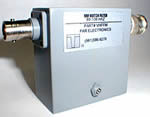Commercial land mobile antennas are typically advertised in dBd gain but most other types are stated in dBi like commercial satellite, military, instrumentation, etc. I work with critical $5M class satellite uplink antennas and you will not find any rated in dBd, its only dBi or dBic if its circular polarized.
Look at any link budget for calculating radio coverage or uplink levels to a satellite or satellite to ground, etc. They all use dBi for antenna gain in the calculation.
The gain standard used is not important because you can interpolate between them and the two things that are important are that its got the actual gain stated and you know what direction its in. You can have two antennas with identical gain ratings that are true but if one is on a lobe pointing 10deg upward it could be several dB lower in gain than the other pointing at the horizon if that's where you need the gain.
If Paul's comment about having a pattern on an aircraft base antenna being 90 degrees to the vertical means the lobe is right at the horizon, that is where you want it for an aircraft base antenna.
When aircraft are at any altitude they are usually line of sight to a base antenna and you can probably hear them on just the center pin of a PL-259 sticking up with no antenna. If you want to hear aircraft 200, 300 400mi out you need the antenna to have gain at the horizon when its down below buildings or the horizon. Commercial aircraft base antennas have low angle lobes at the horizon, not up in the air.
prcguy
and with a poor ground plane, you have no idea which direction the thing gives that gain - it could be at 90 degrees to the vertical, and aircraft are mainly not in that direction. Base station - free space antennas rarely get beaten by ground plane types on makeshift small ones - and of course look pretty stupid too, with the usual bodges to keep them up there! You also need to not see isotropic gain figures as real gain - a dipole has 0dB gain, yet on the isotropic scale, it has! Treat any dBi figures as purely hypothetical, and look at dBd for true meaning. Sales hype takes 0dBd gain as looking bad, so converts it to dBi because there are more numbers, impressing people.




